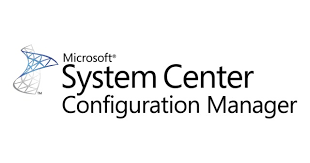Introduction
Microsoft System Center Configuration Manager (SCCM) is a Microsoft product that enables administrators to manage the deployment, patching , update and security of devices and applications across an enterprise network
Administrators also commonly use SCCM for endpoint protection.
The SCCM integrated console enables centralized management of :
- Microsoft Application Virtualization (App-V),
- Microsoft Enterprise Desktop Virtualization (Med-V),
- Citrix XenApp,
- Microsoft Forefront and Windows Phone applications
Microsoft System Center Suite
SCCM is one of Microsoft system center suite , which include :
- SCCM : configuration manager
- SCOM : operation manager
- DPM Data Protection Manager : enterprise backup system
- SCO : Orchestrator , workflow management solution for the data center
- SCSM: Services manager, best practice of MOF
- Service Management Automation
- SPF : Service Provider Foundation ,deliver infrastructure as a services to client
- VMM Virtual machine manager
SCCM features & Functionalities
ASSET MANAGEMENT
- Hardware inventory :
- Application Inventory :
- Asset intelligence extended feature to HW inventory [like license ]
- Software metering [like usage ]: how many time that has been used
DEPLOYMENT
- OS deployment : through PXE NIC like RIS in win2003 ,and WDS in win2008
- Software Update : like SUS ,WSUS,WSUS2,WSUS3SP2
- Application Deployment : Like GPO ,
- please note that application could be Microsoft or NON Microsoft
- using [catalog ]
- user could run or auto install
COMPLIANCE MANAGEMENT
- Enable or disable any registry KEY
- Was done previously by GPO
- LIKE [desired config management ] in 2003,2007
SECURITY
- NAP : Network Access Protection
- Endpoint Protection
REMOTE MANAGEMENT
- Wake on LAN
- Remote control >> if account is logged off then able to login
- Remote assistance >> if account is logged off then unable to login
you might have some difficulties to understand ALL these features
BUT
when you join Network pioneers in this course : we will see how much easy to manage any scale network with SCCM
please keep with us 🙂
can I live without SCCM ?
well ,
always we get that question :
why do I need SCCM if I can perform some of it’s features with basic Microsoft tools ?
the answer yes : you can perform some simple features [NOT ALL] of SCCM with windows and active directory . like :
- deploy application with GPO
- modify registry keys from GPO
- deploy operating system manually
- update operating system and application by WSUS
BUT ,,,,,
the power of SCCM is that give IT helpdesk team the centralized management , with power of reporting and some unique feature that will NEVER get it anywhere else
actually SCCM get benefits of some these tools , and give some unique added values to these tools
some people argues that SCCM is designed for large enterprise environment
this is NOT true
what ever your network size : small , medium , enterprise , even you have campos >> SCCM will ease your network management , so you can look to strategic issues rather struggling with daily network issue
SCCM engineers Scope of Work
Now ,,,,
I have been hired at enterprise company in IT department , and one of my Roles was [SCCM engineer] , so ……what is my scope of work ?
- deploy operating system , software , updates , and patches
- Maintaining a healthy infrastructure of servers which holds any role in the software deployment process.
- This includes to make sure , data on the domain controller is up-to-date since it’s the primary data source of SCCM
- Monitoring primary site(s) and distributions points, including the critical OS services and also the status of the SCCM site components.
- Keeping an eye on the software deployments and troubleshooting mayor installation errors.
- Configuring the deployments in a way that is easy and tolerant on the end user.
- Securing the infrastructure by carefully dividing the SCCM server roles between the affected servers, scheduling the maintenance tasks to avoid collision of these tasks in order to run the site at top performance.
- Managing the site backup (including database and OS backups of the primary site).
- Try to avoid third party software,
- Every administrative action can be delegated and they should be.
These are the most important duties of SCCM engineer ,
Conclusion
System Center Configuration Manager (SCCM is also known as ConfigMgr) is a systems management software product developed by Microsoft. The features include remote control, patch management, software distribution, operating system deployment,and hardware and software inventory.
next article we will keep discovering the introduction about SCCM release history and SCCM Role & Hierarchy before deploy SCCM in the environment and start to manage network efficiently

